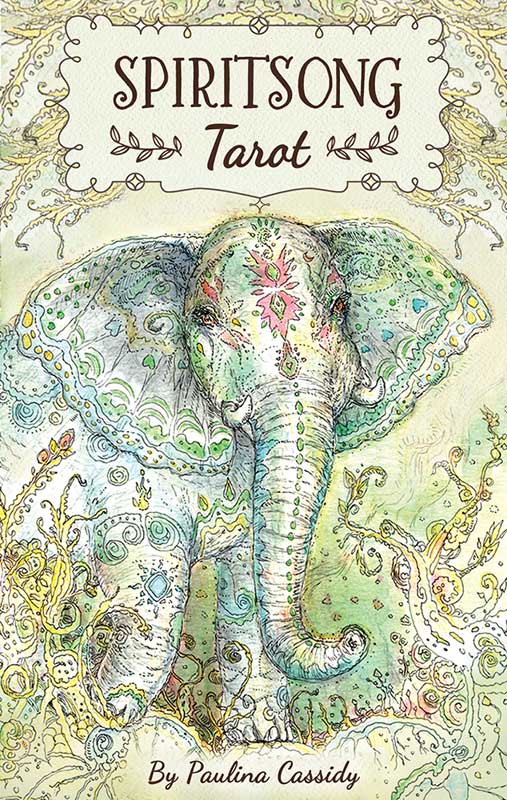AZG
Spiritsong Tarot Deck by Paulina Cassidy
Spiritsong Tarot Deck by Paulina Cassidy
No se pudo cargar la disponibilidad de retiro
This Spiritsong deck is a melding of two traditions of divination: one in which animals are seen as guides between our world and the spirit world, and one that uses 78 cards as a tool to connect with our highest self.
Each animal was specifically selected based on Shamanic and Native American symbolism, merging each animal’s unique power with classic tarot practices. For instance, the Spiritsong animal, Raven, embodies the concept of 'creation', aligning with the symbolic tarot attributes of the traditional Magician card. This is why the Raven is the chosen animal to represent the Magician card in the Spiritsong tarot deck.
The Spiritsong Tarot structure is based on the traditional tarot, containing the 22 Majors, the 56 Minors, and four suits: Acorns for Wands/Fire; Feathers for Swords/Air; Shells for Cups/Water; and Crystals for Pentacles/Earth. Connected to the portals of higher worlds, the 78 Spiritsong animals are mentors of divine guidance.
Animals have Shamanic powers and they’re forever open to providing their energy when called upon. They’re always available to help you attain your greatest spiritual potential. If you ask, they will provide the guidance needed to assist you in finding the best remedy for any situation.
This beautiful 2PK set includes 78 cards and a 108-page guidebook.
Share
About the Artisans
About the Artisans
 Joyeria Semilla meaning Seed Jewelry is a small fair-trade workshop in the Andean town of Villa de Leyva, Colombia. Girasol Taborda, a local artisan and social entrepreneur, started the workshop in the mid-1990s.
Joyeria Semilla meaning Seed Jewelry is a small fair-trade workshop in the Andean town of Villa de Leyva, Colombia. Girasol Taborda, a local artisan and social entrepreneur, started the workshop in the mid-1990s.
Joyeria Semilla’s objective is three-folds; to create new jobs, revive Colombia's handicrafts sector and to motivate locals to better manage their natural resources. The organization works primarily with socially and economically disadvantaged youths, single mothers and people with disabilities in the area. The company offers free training in product design, technical training and marketing to new members. Joyeria Semilla has trained them in the craft of jewelry-making.

Caña Flecha or “Gynerium Sagittatum” is a locally found palm tree in the regions of the Caribbean coast. The leaves from this plant are used for making jewelry, woven hats, bags and baskets. The Zenú Indians were and their descendants inherited the tradition of picking veins of the green palm leaf for weaving. These veins were made into woven hats and other products for their personal use.
The Zenú culture is said to have existed between 200BC to1600AD. With the arrival of the colonizers in the 16th century, the indigenous community declined of unknown reasons. Today a very small population remains that claims the inheritance of the almost extinct Zenú tribe. Known for their skills in the construction of major waterworks, canals and irrigation system along with being skilled goldsmiths, examples of their accomplished craftsmanship are found in various museums around the world. Their larger means of subsistence were hunting, farming, fishing and trading.
Caña Flecha is found in abundance in the region, and hence makes for a sustainable and naturally available raw material for these products. Every bit of the plant is utilized – from using in building walls and roofs in houses to food for cattle and medicinal purposes. It is from the central vein of the leaf that the fibers for weaving are obtained. After the hard surface is peeled off, the fibers are left in the sun to dry and undergo a natural tinting process; these fibers are barely about 1 millimeter in thickness and hence call for a lot of skill and patience to weave with. The dried fibers are then processed for natural coloration - some are boiled with lemon to whiten them and some are treated with mud and boiled with plantain leaves to blacken them. The designs are based on ancient motifs and mathematical representations, which are inspired by the early Zenú culture.




